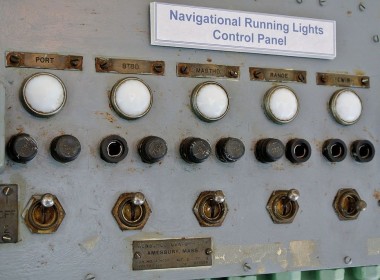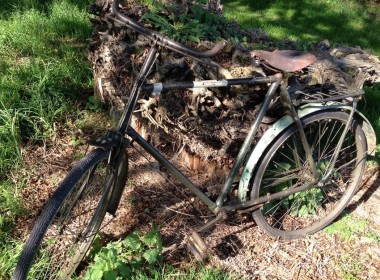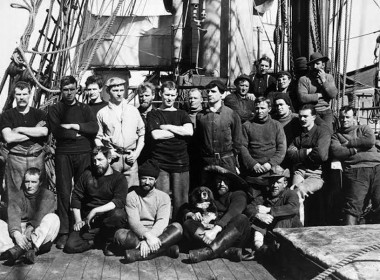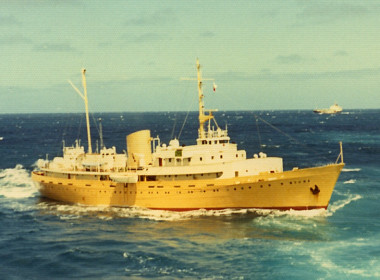REMINISCENCES | Never-ending voyages

You have to feel very sorry for all these seafarers – 200,000 of them at the last count – whose voyages are being extended on account of the Covid-19 crisis. While the huge numbers of cruise ship hotel staff due for repatriation have often required the “extreme” measures of using their ships themselves to take them home, those far smaller crews of cargo ships have been experiencing extreme difficulty at finding reliefs.
Ports saying “no”, along with the unavailability of air transport, even if they say “yes”, and unreasonable quarantine rules have seen the problems pile up, with the international support needed to confront them still being lacking. And even if you can get the existing crew away for their well-earned leave, how do you get their replacements on board, to keep world trade ticking over?
It is perhaps a measure of how the industry and attitudes have changed over the years. My uncle, whose career was served during the first half of the last century, used to leave the UK for four years at a time, to sail in the ships of the British India Steam Navigation Co. He did this all his working life. He might have managed a couple of short leave periods in India itself, but returning home before the four years was up was just not possible. He never seemed to complain about his exile – it was what he had signed up to.
My career started in the mid-1950s, and when a British ship sailed on a foreign going voyage, the crew invariably signed two-year articles. It didn’t necessarily mean that this was the length of your sentence, just that the owner could retain the crew for this length of time, if his voyage required it.
You have to be mad to work here
Normally, a ship would pay off on arrival in a UK port, no matter how long the voyage had been. Our liner services to Australia and New Zealand would revolve around a rough four-month timetable – one month outwards, two on the coast and a month homeward bound, which meant that the ship just about managed two round trips every year. Nobody thought much about productivity in those days. Tramp ship seamen used to consider that we were spoiled rotten, as they never knew where they might be bound when they signed on.
I had a chum who had signed four year indentures at the same time as mine, but with the celebrated Andrew Weir’s Bank Line and he never had any leave at all in this time, merely changing from one ship to another half way through his apprenticeship. That was nothing unusual, although the compensation was that he ended up as an uncertificated Second Mate and made a bit of money, while us liner types ground on in the poverty of our apprenticeships.
I suppose people did get homesick, but the mental illness which people seem so concerned about today was not something of which we were aware. Maybe the words, “you have to be mad to work here”, which were posted under the glass on the chart tables of hundreds of ships, really said it all. Maybe it wasn’t really a joke. There again, we were far more lavishly manned than they are today, with no more than about twenty people (who might not have any common language), rattling around in a gigantic container ship or bulker. With bigger crews, and a reasonable shipboard society, even if a couple of shipmates got on your nerves, there would be others who didn’t.
“More days, more dollars”
But even in our luxurious and pre-programmed liner lifestyles, there were the occasional surprises. About half way through the discharge on the Australian or New Zealand coast, we would learn about the second half of the voyage, where we were to load, and for which ports in the northern hemisphere. Normally, the only surprises might be a diversion to a few Mediterranean ports, or a quick stop in Pacific or Caribbean isles on the way home, which would extend the voyage by a week or so.
If we were particularly unlucky, you would see the local Marine Superintendent coming up the gangway with an evil smile on his face and feared the worst. Soon, the word would be out – the ship wasn’t going home, but would be running back and forth to North America, doubling, or even trebling the length of the voyage. Instead of home for Christmas, it would be slithering round in the ice of the St. Lawrence ports or grim terminals on the US coast where they worked around the clock.
If one was single, footloose and fancy-free, the phrase “more days, more dollars” came to the lips, but for those who had wives and families at home or important plans that must now be shelved, it was somewhat unfeeling and even cruel. It also tended to be the oldest ships in the fleet which tended to be “Shanghai-ed” – as it was termed, their crews having been smoothly assured by the Shipping Master, when they signed on, of a “quick, four month job to Australia and back”. I often thought that the company could have called for volunteers, rather than resorting to the press gang.
But I guess the feelings of those who had been told that they were not going home for another half-year must have been rather like what those “Covid captives” aboard ship are feeling today. It is why we can sympathise.
Submissions wanted! Do you have an exciting, amusing or downright dangerous anecdote from your time in the maritime world? Each week, we will feature new personal experiences from across the globe. Submissions to: [email protected].







